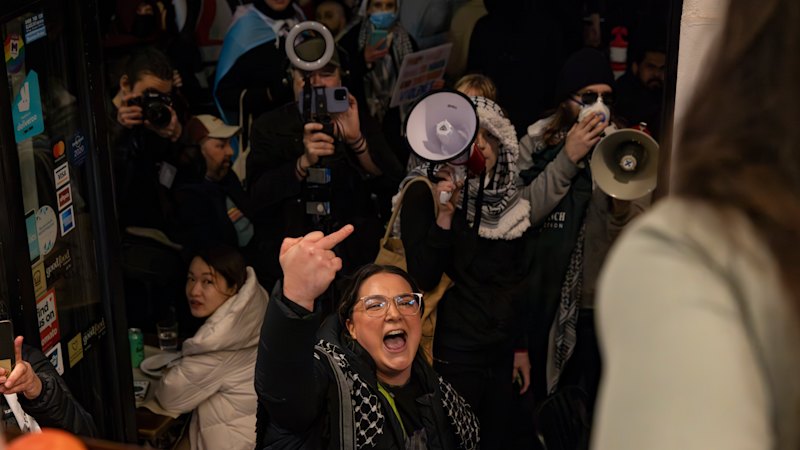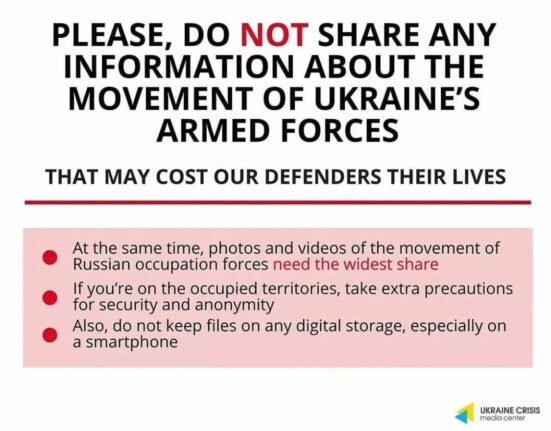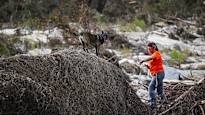In the heart of Melbourne, a city known for its vibrant cultural tapestry, a recent incident at a local Israeli restaurant has stirred up a whirlwind of controversy, shedding light on the complexities of activism, politics, and community tensions. What started as an anti-police protest at the State Library evolved into a chaotic scene as a splinter group, led by members of the Whistleblowers, Activists and Community Alliance (WACA), made their way to Miznon, an Israeli restaurant on Hardware Lane.
The actions of WACA, a fringe group within the pro-Palestine movement, have drawn both attention and criticism for their aggressive tactics in advocating against Israeli ties to local companies and institutions. What unfolded at Miznon that fateful Friday night was a clash of ideologies, a collision of passions that resulted in chaos and arrests.
As activists chanted slogans and clashed with restaurant staff, the broader implications of their actions rippled through Melbourne’s Jewish community and beyond. The incident at Miznon was not an isolated event but part of a larger narrative of protest, dissent, and conflicting perspectives on the Israeli-Palestinian conflict.
“There are a few of these groups, and WACA people are one. They come in and take things too far. We have to step in and de-escalate,”
remarked a source familiar with the situation, reflecting the sentiments of many within the pro-Palestine movement who seek peaceful advocacy over confrontational methods.
The aftermath of the Miznon incident revealed a community grappling with the repercussions of radical activism. Arrests were made, individuals faced consequences for their actions, and a spotlight was cast on the blurred lines between activism, extremism, and the right to protest.
“While politicians in so-called Australia clutch their pearls over one meal that was interrupted, we ask people to refocus their attention on Israel’s genocidal reign of terror over the Palestinians,”
stated WACA in defense of their actions, highlighting their underlying motivations and the stark contrast between their perceived intentions and the actual outcomes of their protest.
The controversy surrounding WACA and their methods underscores a larger debate on the limits of activism, the fine line between advocacy and aggression, and the broader social and political landscapes in which these movements operate. The clash at Miznon serves as a microcosm of deeper-rooted tensions and divisions that manifest in moments of unrest and dissent.
As the dust settles and the repercussions of the Miznon incident reverberate through Melbourne, questions linger about the efficacy of radical activism, the boundaries of protest, and the complexities of advocating for political causes in an increasingly polarized world. The actions of WACA and the responses they evoke underscore the intricate web of beliefs, emotions, and consequences that shape modern-day activism and its impact on communities and individuals.
In the aftermath of chaos, arrests, and public outcry, the incident at Miznon stands as a stark reminder of the power and perils of activism, the nuances of dissent, and the ongoing quest for justice, peace, and understanding in a world rife with conflict and contention.









Leave feedback about this